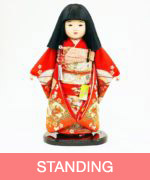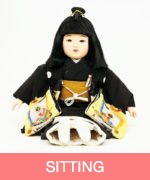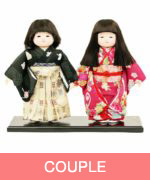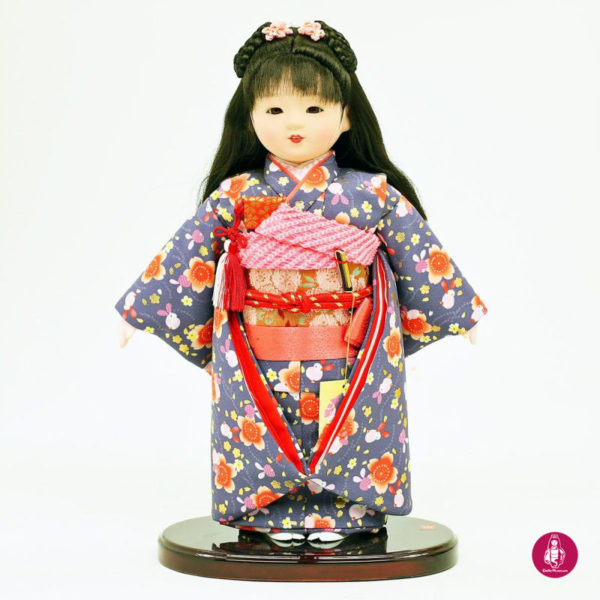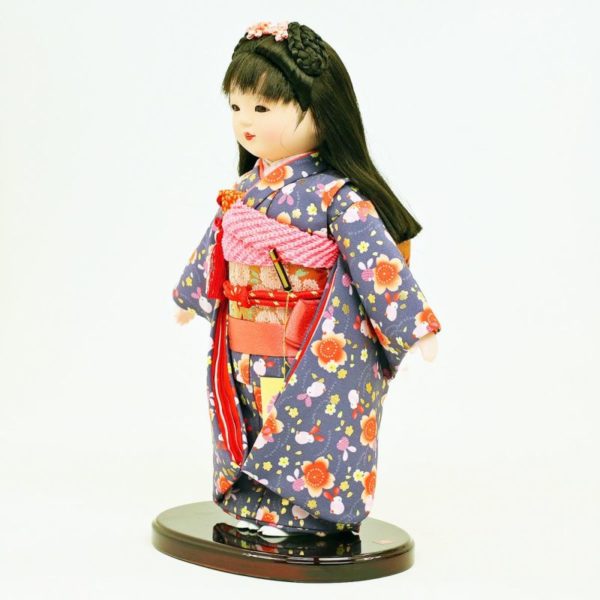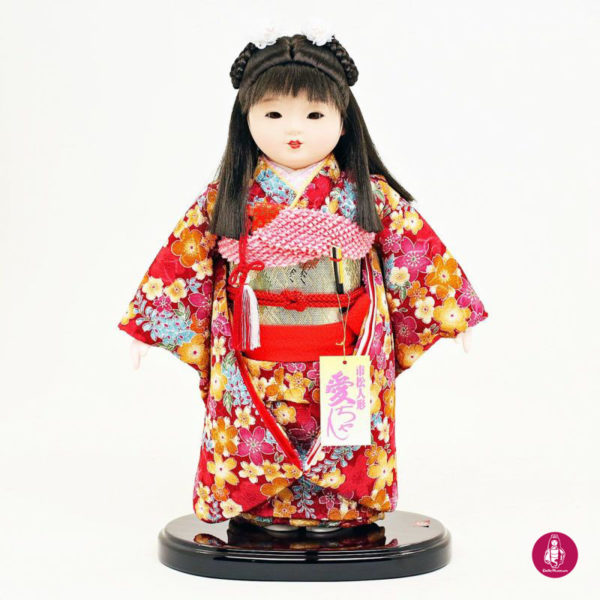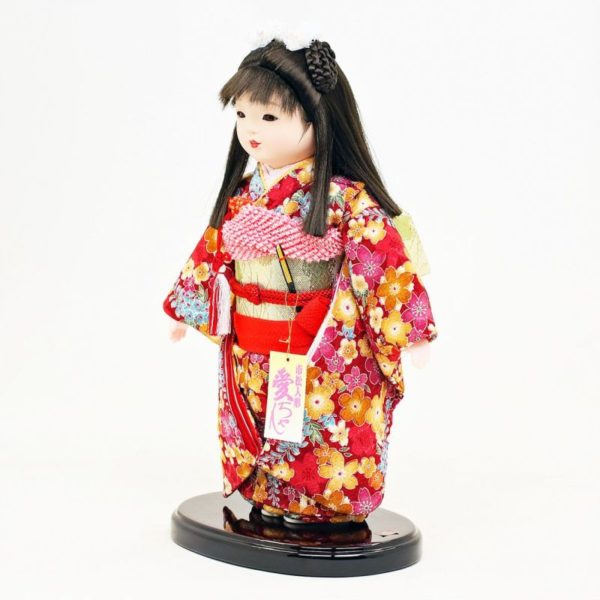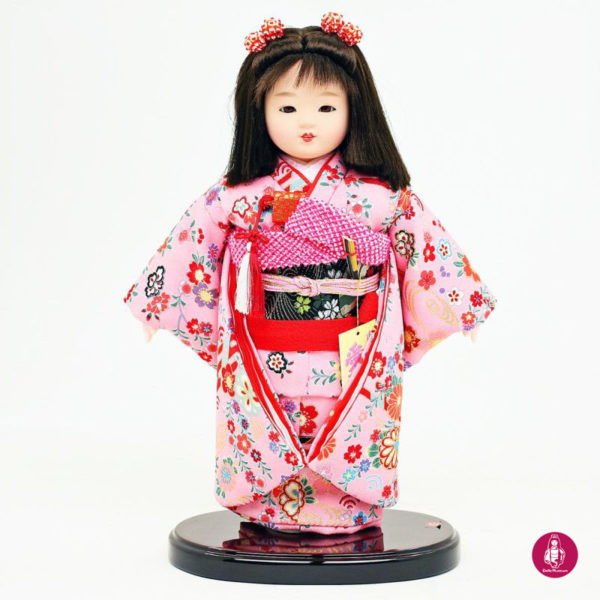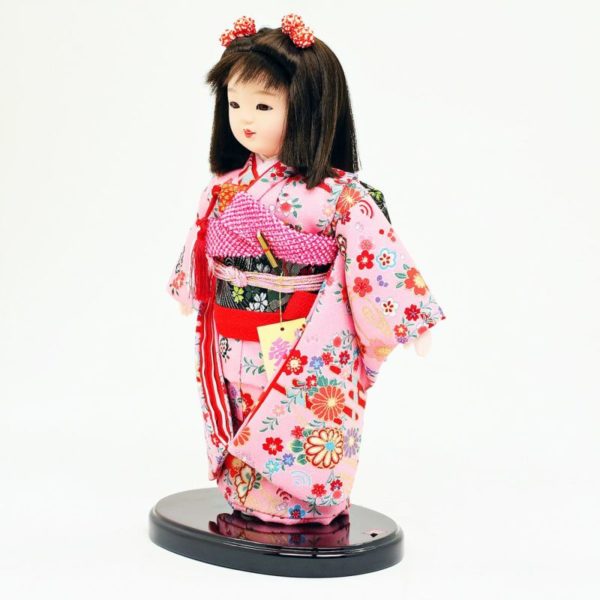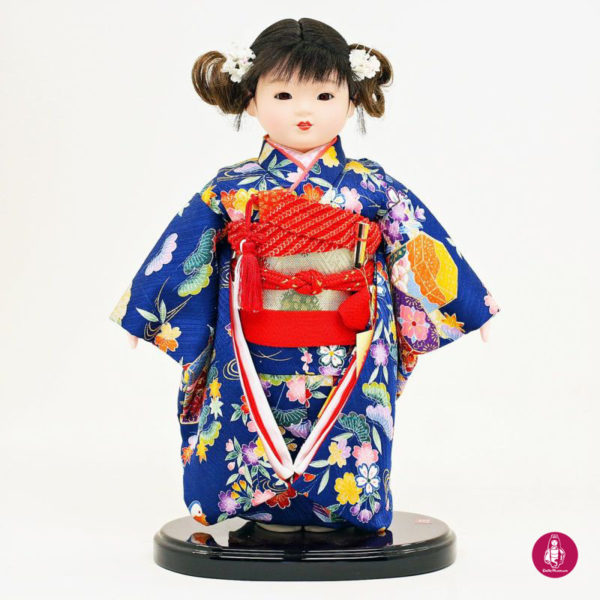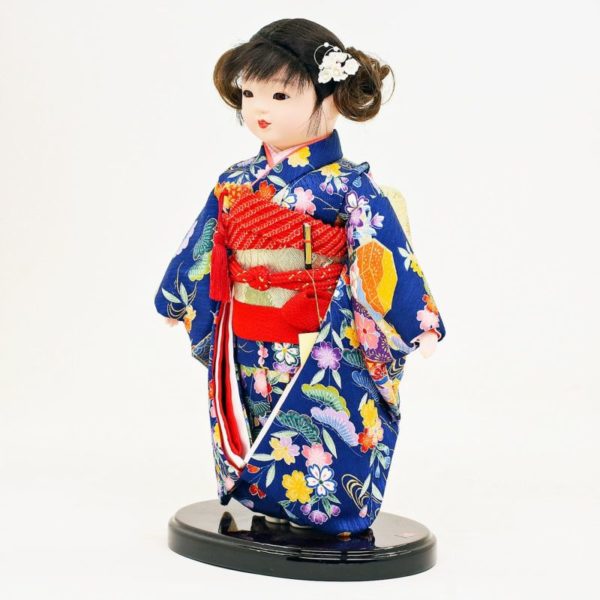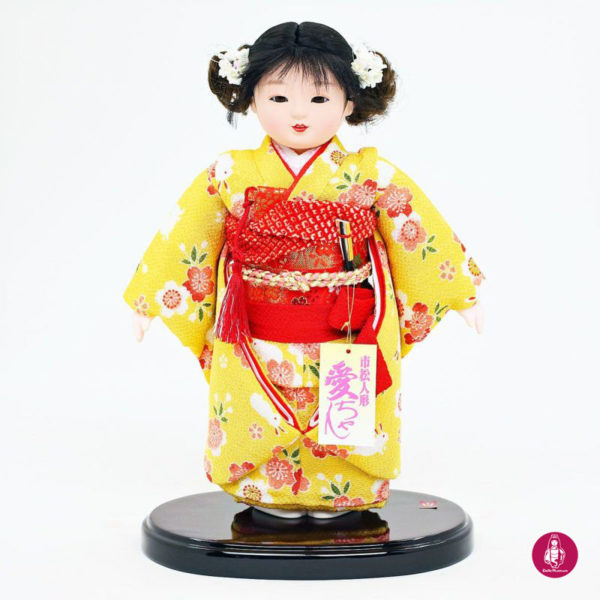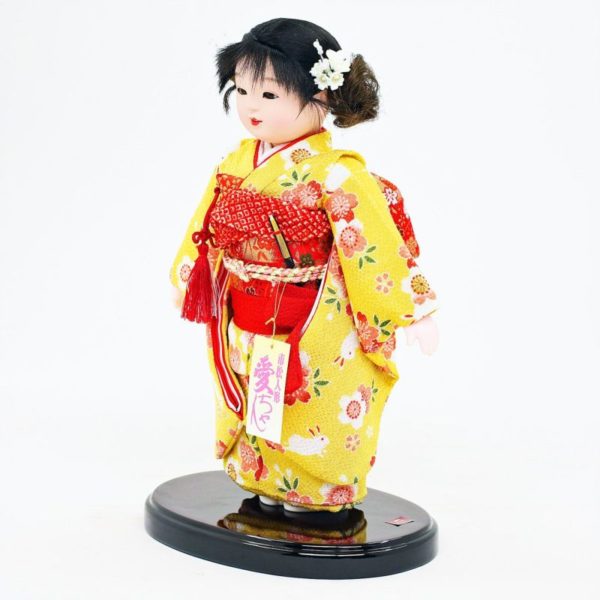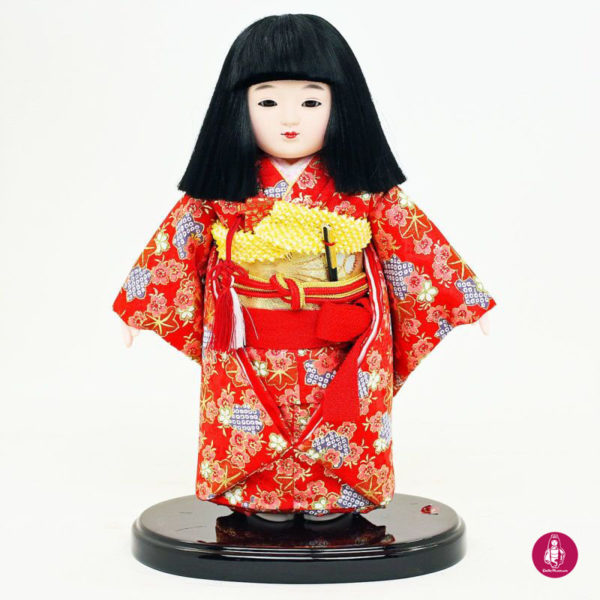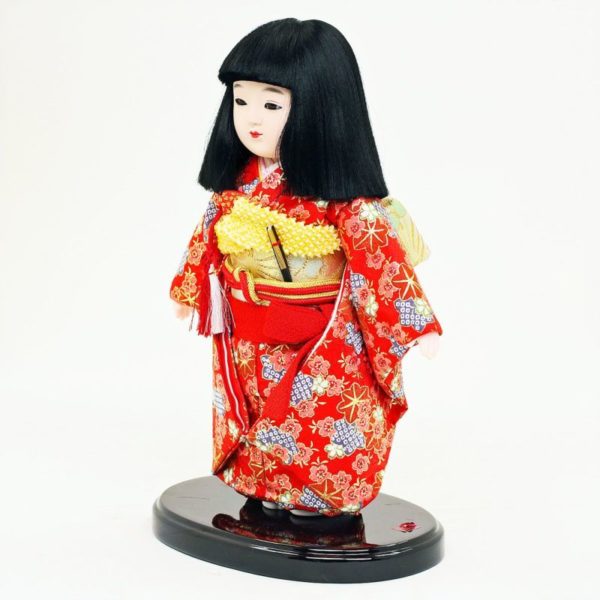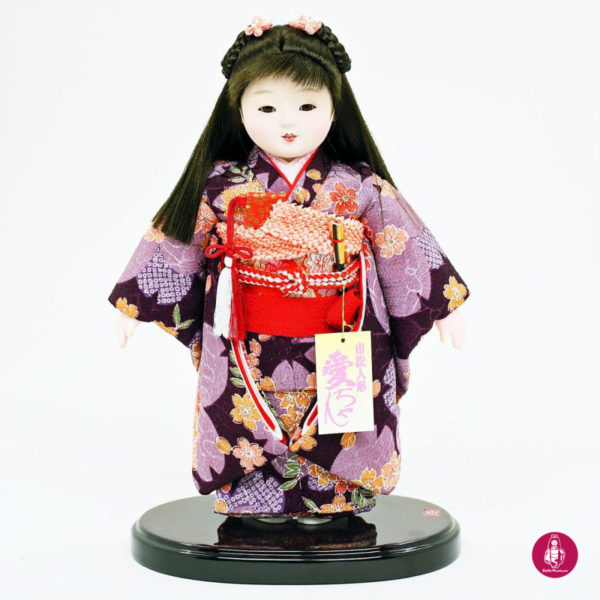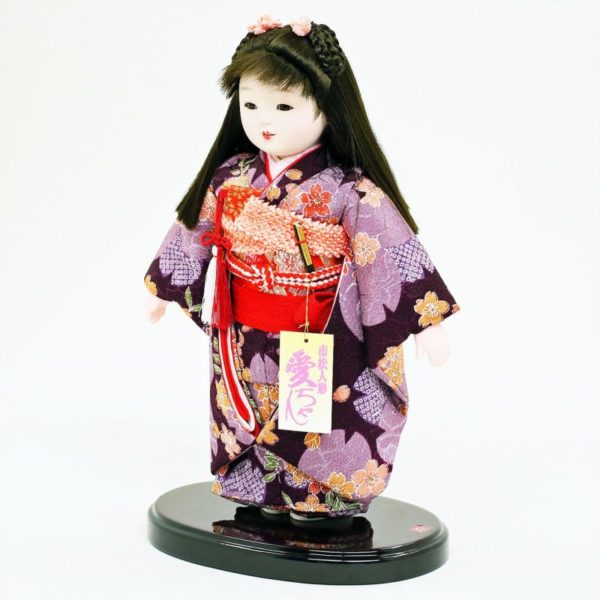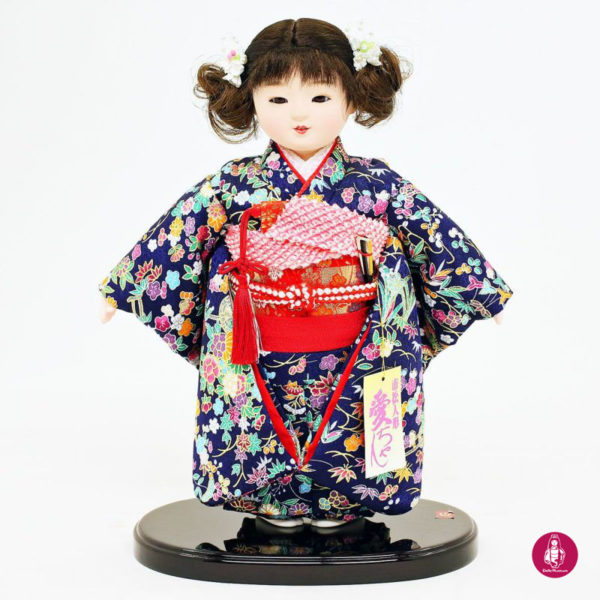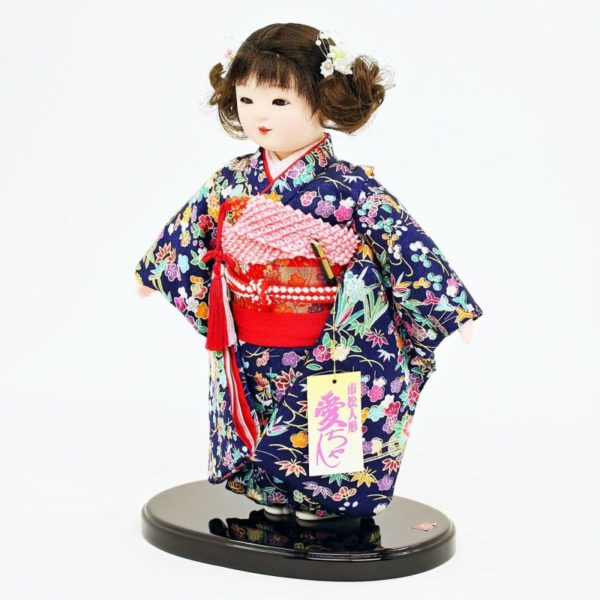Showing 41–48 of 48 results
-
$292.48
The doll wears a Kimono (traditional Japanese costume) which is designed with different types of Sakura (cherry blosom) and Usagi (rabbit) patterns. According to a tradition, cherry blossom is the symbol of rich harvest. It’s said that it might be the reason why cherry-blossom viewing picnic was started in Japan. Rabbit pattern is a kind of good omen motif. As they hop around, its pattern represents progress. Also, they have lots of children so that this pattern symbolizes the rich harvest or prosperity of children. Obi (sash worn with a Kimono) is dyed orange and designed with cherry blossom pattern. This Kimono is dyed gray color. The combination of rabbit,…
-
$253.48
The doll wears a Kimono (traditional Japanese costume) which is designed with different colors of Sakura (cherry blosom), Ume (Japanese apricot) and Fuji (Japanese wisteria) patterns. According to a tradition, cherry blossom is the symbol of rich harvest. It’s said that it might be the reason why cherry-blossom viewing picnic was started in Japan. The flowering of Japanese apricot blossoms announces the arrival of spring. People appreciate its adorable petal shape, scent and characteristic branches. This flower pattern represents patience, vitality or prosperity of future generations. As Japanese wisteria has a high fertility rate, it’s said that this flower pattern represents longevity or prosperity of future generations. This Kimono is…
-
$253.48
The doll wears a Kimono (traditional Japanese costume) which is designed with different colors of Sakura (cherry blosom), Ume (Japanese apricot), Kiku (chrysanthemum) patterns. According to a tradition, cherry blossom is the symbol of rich harvest. It’s said that it might be the reason why cherry-blossom viewing picnic was started in Japan. The flowering of Japanese apricot blossoms announces the arrival of spring. People appreciate its adorable petal shape, scent and characteristic branches. This flower pattern represents patience, vitality or prosperity of future generations. Chrysanthemum is one of the most popular designs among Japanese people. As its petals form radially, it’s linked to the Sun. This flower pattern represents the…
-
$253.48
The doll wears a Kimono (traditional Japanese costume) which is designed with different colors of Sakura (cherry blosom), Matsu (pine tree), Momiji (maple) and Oshidori (mandarin) patterns. According to a tradition, cherry blossom is the symbol of rich harvest. It’s said that it might be the reason why cherry-blossom viewing picnic was started in Japan. Pine tree keeps its green color all the year around so that it’s treated as the holy plant. Maple changes its leaves color from green to yellow, orange or red. It’s one of the charms of fall and it symbolizes this season. The combination of this plant pattern and running water or waves patterns are…
-
$220.98
The doll wears a Kimono (traditional Japanese costume) which is designed with Sakura (cherry blossom) and Usagi (rabbit) patterns. A tradition says that cherry blossom is the symbol of rich harvest. It’s said that is why cherry-blossom viewing picnic was started in Japan. This flower pattern is one of the most popular motifs for lady’s Kimono. Running or jumping rabbits are designed for this Kimono. As rabbits hop along, its pattern represents progress. It symbolizes also prosperity of future generations because rabbits have many children. Like cherry blossom pattern, rabbit pattern is often used for lady’s Kimono but especially for girls one. Same as Kimono, Obi (sash worn with a…
-
$220.98
The doll wears a Kimono (traditional Japanese costume) which is designed with Sakura (cherry blossom) and Momiji (Maple) patterns. According to a tradition, cherry blossom is the symbol of rich harvest. It’s said that is why cherry-blossom viewing picnic was started in Japan. This flower pattern is one of the most popular motifs for lady’s Kimono. Maple changes its color from green to yellow, orange or red. It’s one of the charms of fall so that its pattern symbolizes this season. The combination of maple pattern and waves of river or sea patterns are often found for Kimono or other types of dyeing and weaving. Kanoko-Mon is used to describe…
-
$240.48
The doll wears a Kimono (traditional Japanese costume) which is designed with different sizes of large-flowered Sakura (cherry blossom) pattern. A tradition says that cherry blossom is the symbol of rich harvest. It’s said that is why cherry-blossom viewing picnic was started in Japan. This flower pattern is one of the most popular motifs for lady’s Kimono. Kanoko-Mon is used for describing several cherry blossoms. Kanoko means the child of deer. It’s a kind of tie-dyed geometric pattern which is similar to the pattern on the back of a deer’s kid. This pattern represents prosperity of future generations. Same as Kimono, Obi (sash worn with a Kimono) is designed with…
-
$220.98
The doll wears a Kimono (traditional Japanese costume) which is designed with different colors of Botan (peony), Kiku (chrysanthemum), Momiji (maple), Suisha (waterwheel) and Sho-Chiku-Bai patterns. Peony flower pattern represents happiness, wealth or perpetual youth and longevity. It has been expressed as one of the good meaning patterns, and believed as a sign of the rich harvest of the year. Waterwheel pattern can be found at the hem of her backside, close to peony flowers. Chrysanthemum flower is one of the most popular designs among Japanese people. As its petals form radially, it’s linked to the Sun. This flower represents the eternal youth, the longevity or good health. Maple changes…

